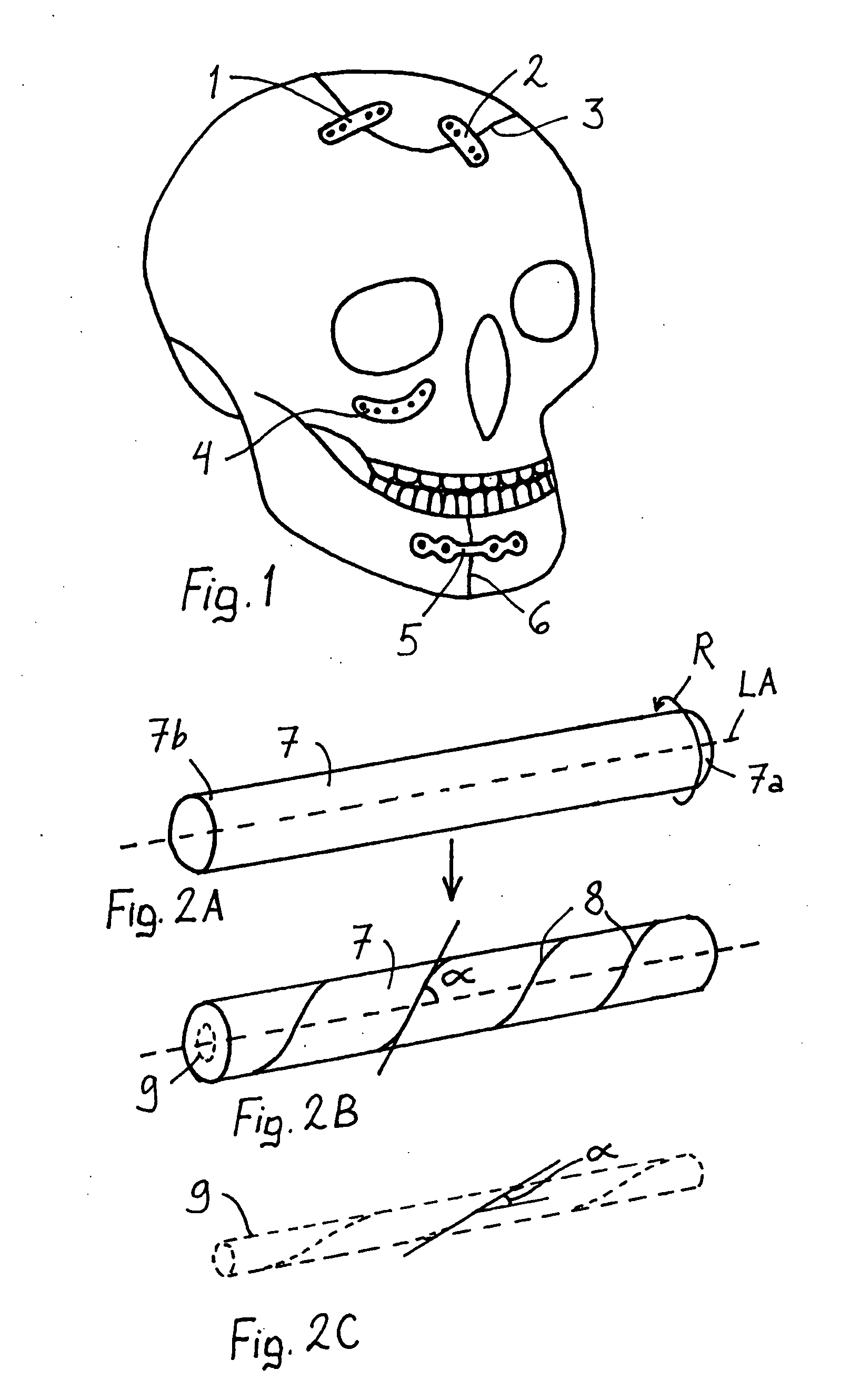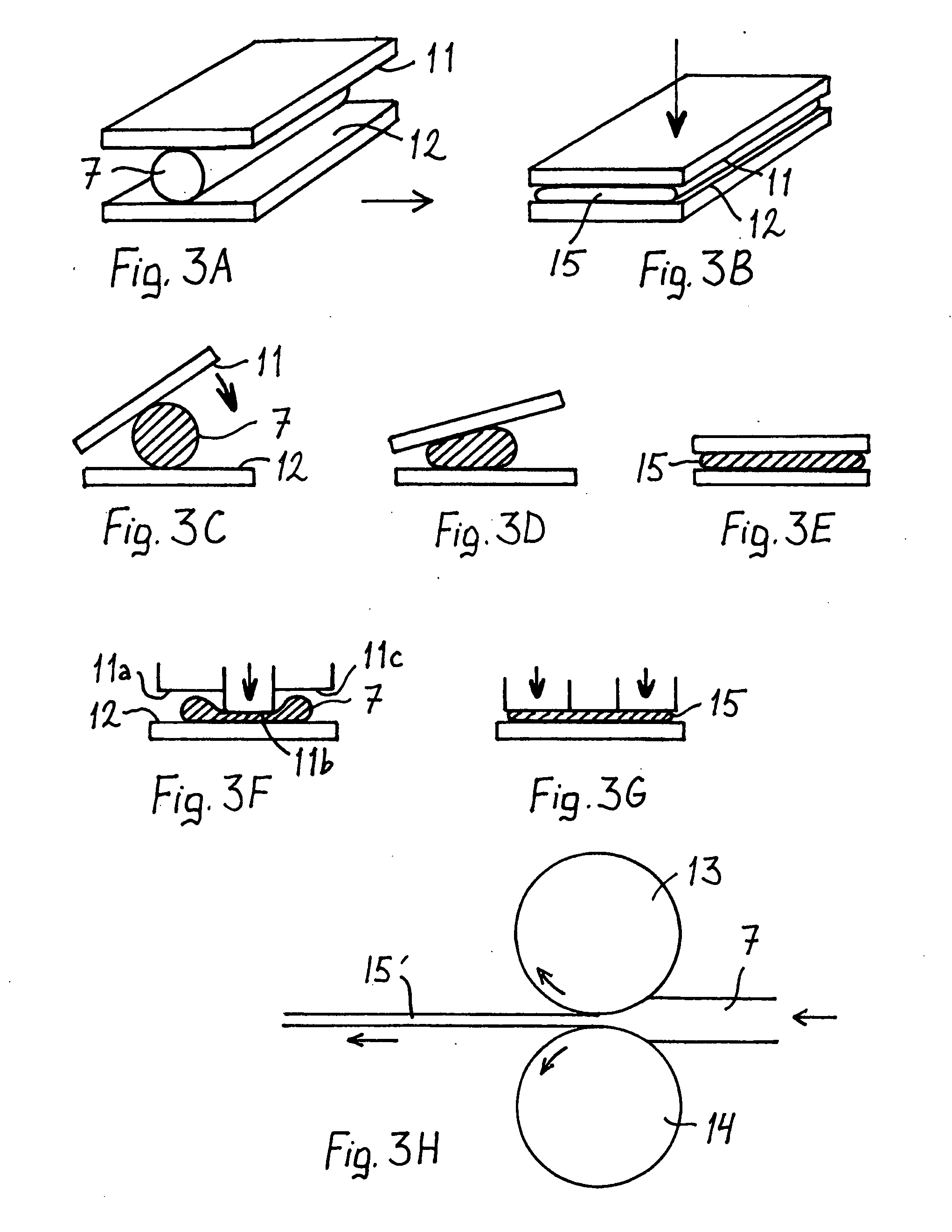Bioabsorbable, deformable fixation material and implant
- Summary
- Abstract
- Description
- Claims
- Application Information
AI Technical Summary
Benefits of technology
Problems solved by technology
Method used
Image
Examples
example 1
[0135]Commercially available medical grade PLGA 85L / 15G polymer granulate [Boehringer Ingelheim, Germany; polymer having inherent viscosity 5.5 dl / g, when measured at 25° C. as dissolved in chloroform (20 mg / 20 ml)] was melt extruded with a custom made 20 mm twin screw extruder to an elongated cylindrical rod (diameter=6.1 mm) which was cooled to room temperature. The inherent viscosity of such a melt extruded preform was about 3.5 dl / g. The melt extruded preform was fastened at one end to a moving part of a custom made plate manufacturing device. Another (not moving) fastening point was 60 mm apart from the fastened end of the preform. The preform between the fastening points was heated with hot air to about 80° C. The moving part was pulled 88 mm along the longitudinal axis of the preform, thus the preform was longitudinally stretched from 60 mm to 148 mm yielding a draw ratio of 2.5. The moving part was then rotated 4 rounds around the longitudinal axis of the preform, which was ...
example 2
Hole Tear Test
Equipment:
INSTRON 4411 (tensile testing machine at TTY / Institute of Biomaterials)
[0138]Crosshead speed: 10 mm / min
Cell: 5 kN
Gauge length 50 mm
[0139]Hole diameter in plate: 0.7 mm
Metal string was used as a material to tear the hole
[0140]Plates made from the same raw material by the same methods as in Example 1 were tested for the strength of the hole that is near the end of the plate. The hole was torn in the direction of long axis to the end edge with a metal string inserted through the hole. Maximum load / plate thickness was used as a test parameter. The results are summarized in FIG. 12. It can be seen that both helical orientation and helical orientation combined with uniaxial orientation increase the hole tearing strength compared with non-oriented and uniaxially oriented samples. Increase in the number of rounds per unit length in the helical orientation will also increase the tearing strength.
Surgical Methods of Using the Plate
[0141]As a summary, a method for secur...
PUM
| Property | Measurement | Unit |
|---|---|---|
| Time | aaaaa | aaaaa |
| Temperature | aaaaa | aaaaa |
| Shape | aaaaa | aaaaa |
Abstract
Description
Claims
Application Information
 Login to View More
Login to View More - R&D
- Intellectual Property
- Life Sciences
- Materials
- Tech Scout
- Unparalleled Data Quality
- Higher Quality Content
- 60% Fewer Hallucinations
Browse by: Latest US Patents, China's latest patents, Technical Efficacy Thesaurus, Application Domain, Technology Topic, Popular Technical Reports.
© 2025 PatSnap. All rights reserved.Legal|Privacy policy|Modern Slavery Act Transparency Statement|Sitemap|About US| Contact US: help@patsnap.com



